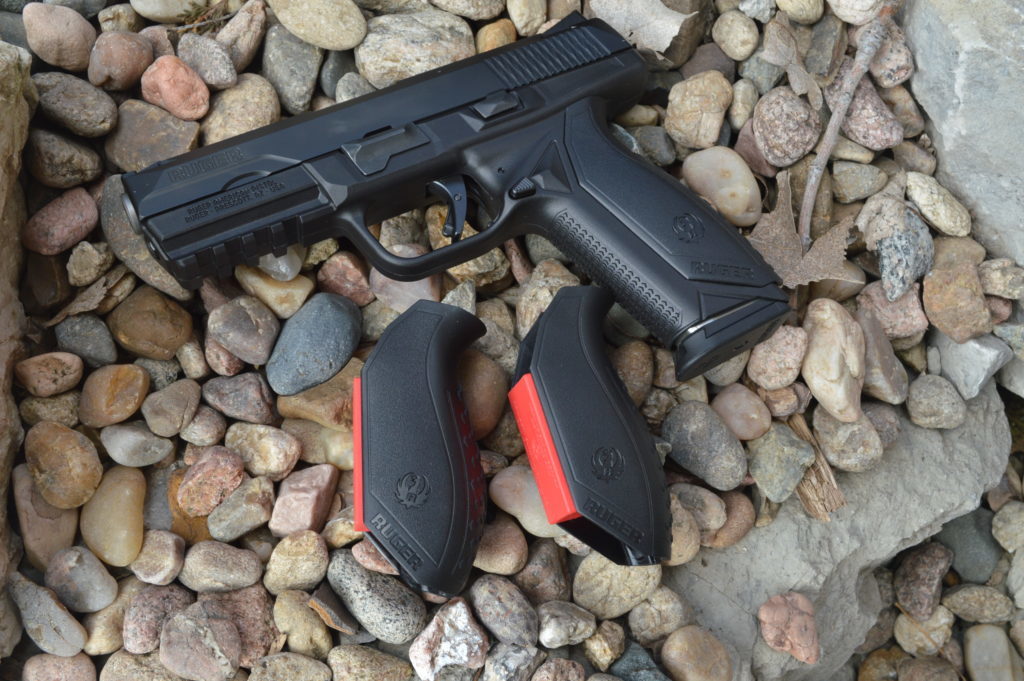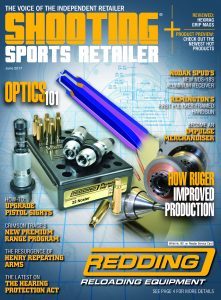Just over 10 years ago, the most exciting products coming out of Ruger were an updated Ruger Mark III and the Red Label Shotgun. Even the hard-core Ruger fans did not see Ruger as a firearms innovation company. Instead, Ruger was seen as a company that produced a set of highly durable affordable “standard” firearms. In early 2000, Ruger was far from the company it has become today. Since then, Ruger has officially been transformed.
As the market has seen with both privately and publically held companies, leadership at the top can make all the difference in the world. Ruger never lacked leadership, but it did need to strategy update to remain competitive with the large-growing conglomerates in the sporting industry. Ruger currently has done well as a publically traded stock. Ruger has also been able to reap the rewards during the surge in firearms sales over the last eight years and has aggressively invested in new equipment, facilities and key personnel to continue to drive a high level of product innovation and quality.
In 2006, Ruger began its transformation from the old Ruger to a company based on innovative new designs instead of just legacy Ruger products. With the appointment of Mike Fifer as the new CEO and an almost completely new board of directors, the company was poised for change.
“I am pleased and honored to be a key part of the new team now heading the nation’s finest firearms manufacturer. Working closely with our newly reconstituted Board of Directors, Ruger President Steve Sanetti and many other Company leaders, I look forward to leading Sturm, Ruger into its very promising future,” said Fifer.
Just over a year later, in 2007, the cutting-edge Ruger SR9 pistol was released. It was widely regarded as one most innovative products from the company in decades. It was a bold move for Ruger to go after the polymer pistol market. Then the polymer-framed LCP was unveiled in 2008, again showing the industry that Ruger was not playing by its old design rules any longer. New product ideas began to flow fast in 2009 with the notable introductions of the polymer-framed LCR revolver, Gunsite rifle, SR1911, SR-556 and SR22. In those same years, Ruger continued innovating and updating the quality, style and features of legacy models. This included modification of the 10/22 format for the Charger Pistol and unique Take-Down models. This has been a formula the Ruger management team has continued with the expansion of the SRx, LCx, American, Mark IV line of pistols, and American, Gunsite, SR-556/762 and Precision Rifle models. Instead of just re-warmed product offerings, each year Ruger gave customers new products to be excited about.

Ruger's American Pistol represents an aggressive re-entry into the polymer pistol market. This is arguably the most feature-rich handgun per dollar available in the market.
New facilities, tooling and manufacturing capabilities dramatically improved the overall the quality and precision of Ruger products across all models. The American Rifle and Pistol line and the Precision Rifle all set new standards for quality and precision that people expected from Ruger. These new firearms are a reflection of what Ruger has become. Using cutting-edge technology, new Ruger rifle models were extremely affordable, featured innovative engineering all while being feature rich and shockingly accurate. The Ruger Precision Rifle is now regarded as one of the most accurate and well-equipped out-of-the-box product rifles available anywhere. Now other competitors are playing catch up to this feature loaded rifle.
Based on information in the 2015 annual report, Ruger’s 2006 yearly sell through was approximately 480,000 units. Nine years later under Fifer’s leadership, Ruger’s yearly sales exceed half a billion dollars and has a yearly sell through of approximately 370 percent more per year, with the 2015 sell-though totaling 1,793,800.
Shooting Sports Retailer was able to discuss with Mike FIfer, CEO of Ruger and Tom Sullivan VP Newport & Mayodan Operations how the company has changed.
SSR: Can you give retailers some insight into your strategy at Ruger?
Fifer: New product development is a key part of the ongoing success of Ruger. Integral to that process is the Voice of the Customer program that solicits input from potential purchasers so we are developing the products consumers are looking for. In addition, the knowledge and experience of Ruger employees that are active shooters and hunters contributes to the new product development process.
Tom Sullivan, Ruger Vice President Newport & Mayodan Operations: Our company exists to add value to our associates, community, society, and our customers. We try to be “people-centric” while working toward creating pure value by striving to eliminate non-value added activities in every process in our business. We do this by a thoughtful application of the Toyota Production System. This allows us to provide products that enhance our customer’s shooting experience, and supports our customer’s 2nd Amendment right to keep and bear arms.
SSR: Can you elaborate on the facility, tooling and equipment expansion Ruger has added?
Sullivan: Ruger has continued to invest in plant modernization and expansion. Production of many recently introduced products has required new and varied approaches with ongoing investment in equipment, training and processes.
The opening of the Mayodan, North Carolina facility required extensive updating of an existing building and installation of machines and hiring of the workforce. For example, we purchased a 220K square-feet former textile plant for $1.7 million. The initial up-fit cost was $5.5 million and we have since invested more than $30 million in equipment.

Ruger CEO Mike Fifer
SSR: How have new products impacted your business?
Fifer: New product introductions are an important driver of demand, regardless of the political environment. In 2016, we launched three new major product platforms including the Ruger Precision Rifle, the Ruger American Pistol and the Silent-SR sound suppressor. In addition, we introduced more than 20 product line extensions and over 100 Distributor Exclusive models. New products generated sales of $115.4 million or approximately 21 percent of sales for 2015 and sales of $50.3 million or approximately 29 percent of sales in the first quarter of 2016. (Source Ruger 2015 Annual Report)
SSR: How has the investment casting business impacted Ruger’s ability to rapidly create new products?
Fifer: The casting business has always been an integral part of the Ruger Manufacturing process and while we continue to use it we are also producing more product through extensive machining of parts and metal injection molding (MIM).
SSR: How does Ruger determine what the consumer market may be interested in?
Fifer: The Voice of the Customer program solicits input from potential purchasers so that we not only develop products of interest but also incorporate the features they would like to see.
SSR: Can you comment on the dramatic change of R&D and product development of new product designs far beyond what customers have typically expected from Ruger?
Fifer: To continue to be successful as a company we need to be competitive in the market place. To do that we need to provide products that consumers want. The Voice of the Customer program, watching hunting trends, reaction to legislation and observing growth in youth and women’s interest in shooting are all part of the information.
FINAL THOUGHTS
Fifer: “We remain committed to developing and introducing innovative new products in growth segments of our market. Innovation is the first of the three core elements of our strategy.
I am optimistic about the opportunities for Ruger to grow and prosper. Ruger has a popular brand, a strong balance sheet, hard-working dedicated employees, and an experienced and engaged Board of Directors. We have a simple but effective three-part strategy: to use new product introductions to spur demand, to adopt lean methodologies throughout the business to enable us to more efficiently fulfill that demand, and to exercise very conservative, disciplined capital allocation.







